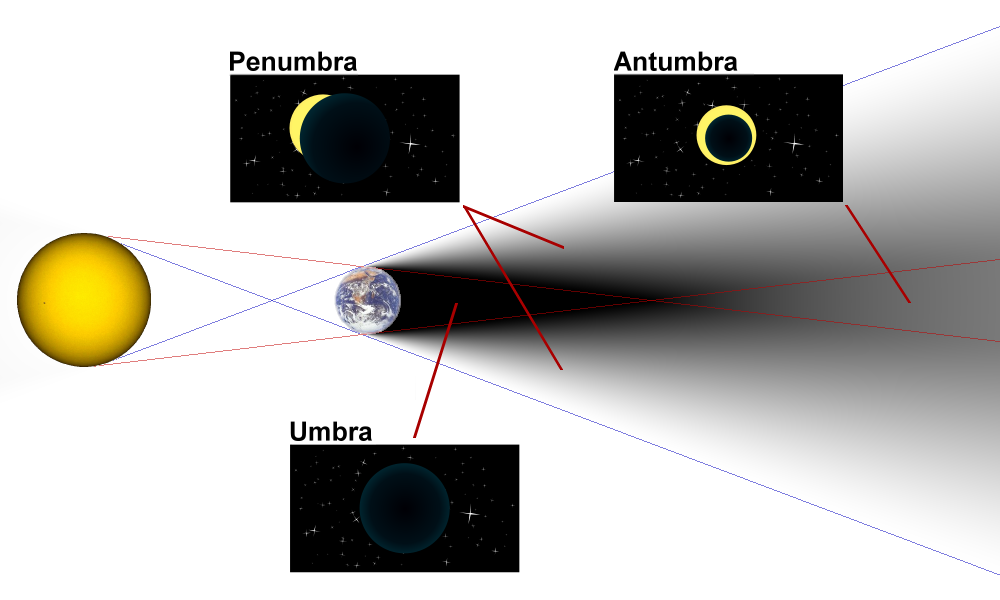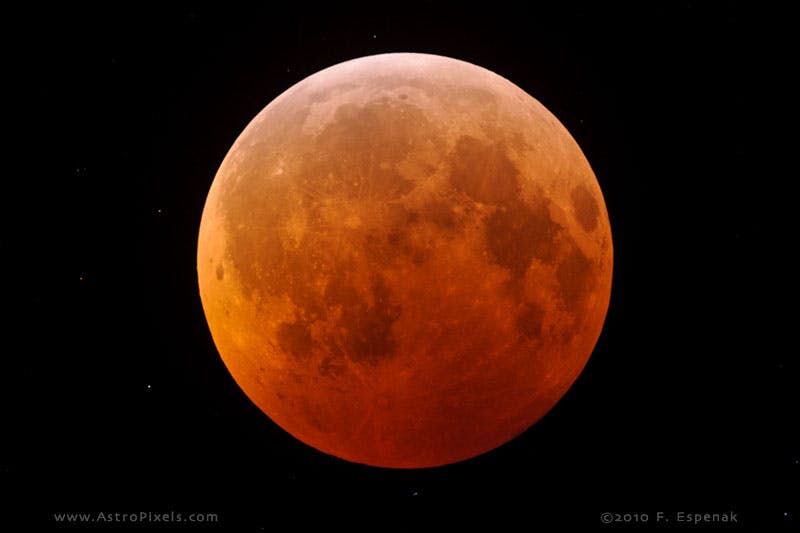I know why the moon goes red during a total eclipse. But why does it not go red until near totality?
This is actually a very interesting question, with an (unfortunately) unsatisfying answer. But let’s take a step back and clarify why the Moon goes red during an eclipse, for people who don’t know.
The Moon goes red for the same reason the sky becomes red at dawn and at sunset. The sunlight is passing through the Earth’s atmosphere, where the blue wavelengths are scattered more than red light. So the rays that go through longer portions of the atmosphere are left with mostly red photons, as the other colours have been scattered away.
During a lunar eclipse, the Moon moves into the Earth’s shadow. It experiences a ‘planetary sunset’ (the Sun appears to be “setting” behind the Earth) and then a planetary dawn as it comes out of full eclipse.

But, surely there is always an area in space where the red light is refracted towards, and the moon just moves into that path, so you should see an area of red grow across the moon?
A follow-up question by Phil

So, before the Moon reaches the umbra (where the Sun is completely covered), it passes through the penumbra which is a large area where the Sun is only partially visible. While in the Penumbra the Moon can turn red but it is quite random. The moment it turns red cannot be predicted, not even just before the eclipse because it is strongly dependent on the composition and nebulosity of the atmosphere at the time of the eclipse.
The redness can appear before or after the total eclipse and it can go with the shadow or follow it.
